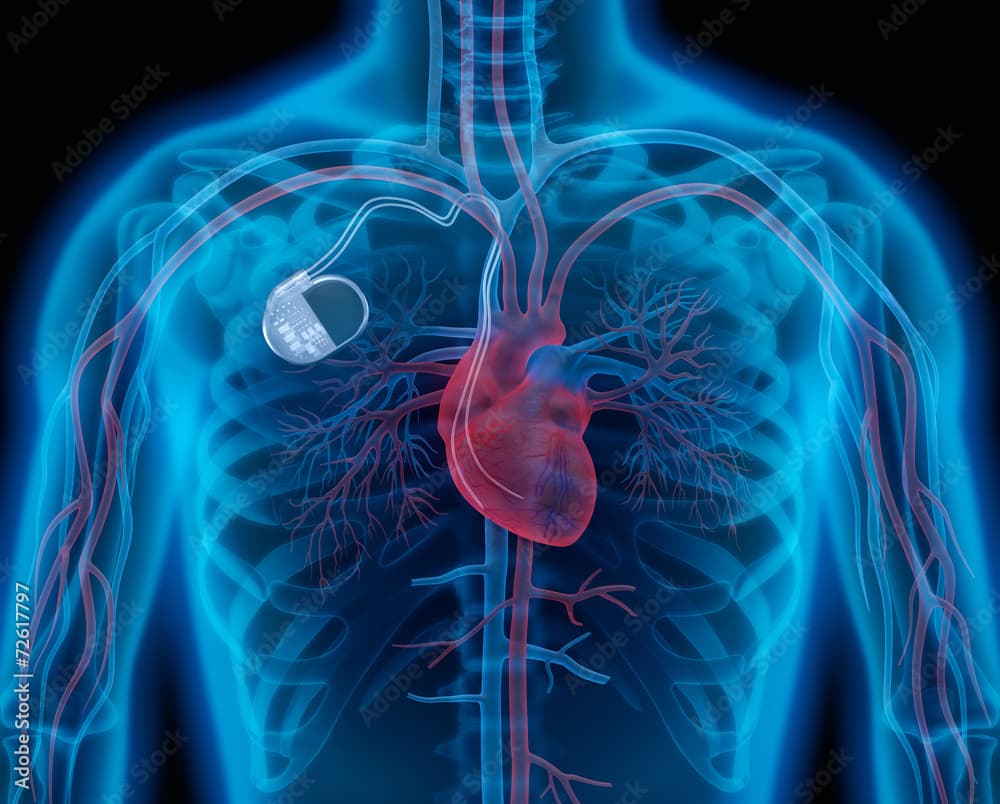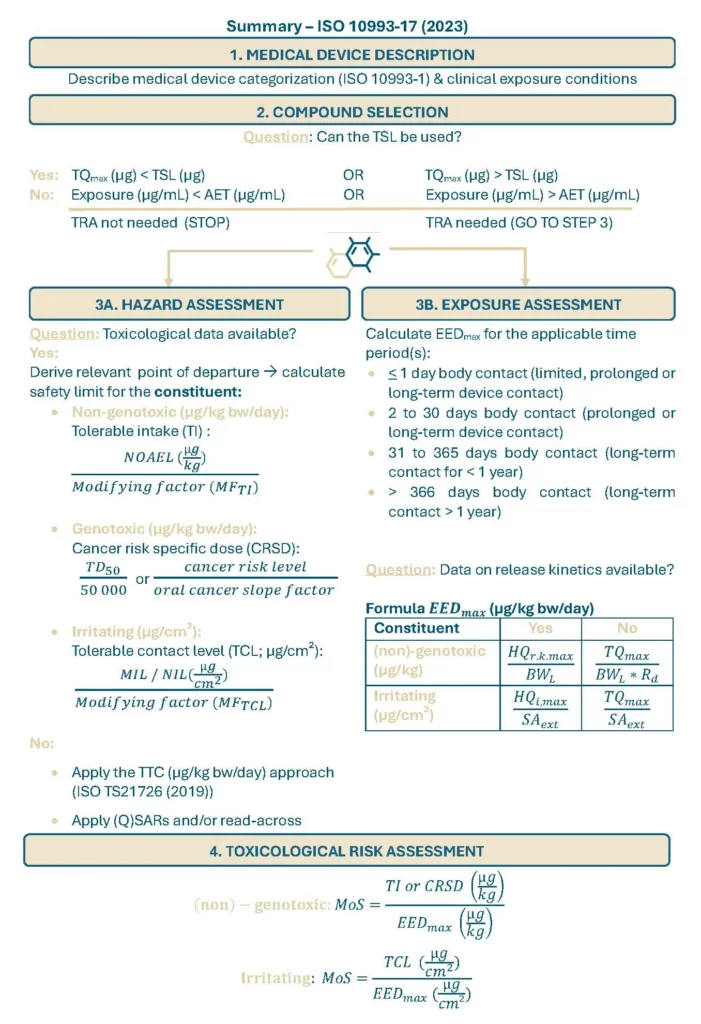Want to know more about our services? Call, mail, or send us a message.
In September 2023, the International Organisation for Standardisation (ISO) released the updated ISO 10993-17 Guidance (Second Edition, 2023) for toxicological risk assessment of medical device constituents. The new edition has led to significant changes in the conduct of a TRA.

Some concepts/terminology of ISO 10993-17 (First Edition – 2002) have disappeared in the ISO 10993-17 (Second Edition – 2023). Examples are: Allowable Limit (AL), Benefit Factor (BF), Concomitant Exposure Factor (CEF), Proportional Exposure Factor (PEF), Utilization Factor (UTF), Tolerable Exposure (TE)).
New concepts/terminology have been introduced such as worst-case Estimated Exposure Dose (EEDmax; µg/kg bw/day), Margin of Safety (MoS), Point of Departure (PoD), Release Kinetics, Total Quantity (TQmax; µg) and Toxicological Screening Limit (TSL; µg).
The toxicological risk assessment (TRA) process outlined in ISO 10993-17 (Second Edition – 2023) consist of four key steps: Step 1 involves describing the medical device; Step 2 focuses on the compound selection; Step 3 includes an hazard assessment and exposure assessment of the selected compounds and Step 4 covers the risk assessment. A more detailed process of each of these steps is further shown in the figure below

It is important to note that the new guidance document does not request a reassessment of historical ISO 10993-18 chemical constituent data assessed under the previous edition (i.e. ISO 10993-17:2002). However, it is recommended to show compliance with the current edition (i.e. ISO 10993-17:2023) by providing a justification for the adequacy of the historical TRA.
For TRAs conducted under ISO 10993-17 (2023), the “Toxicological Screening Limit (TSL)” can be used to determine if the total quantity (TQmax) of a constituent poses a toxicological risk. If TQmax is below the TSL, the toxicological risk is considered negligible and no further assessment is needed, saving time and resources.
As experts in toxicology, we can guide you through regulatory changes and ensure your toxicological risk assessments (TRAs) are up-to-date and compliant with newest ISO standards.

Copyright © 2024 | Agirad